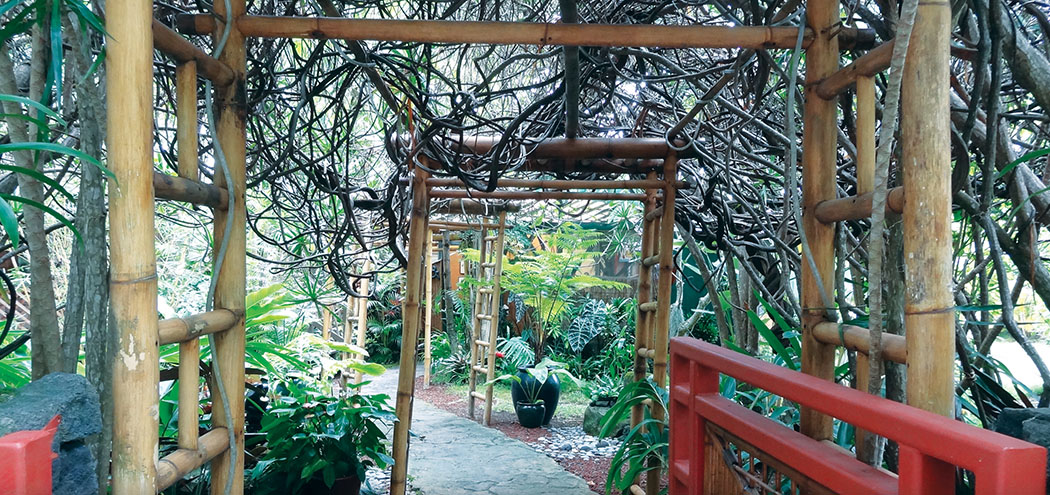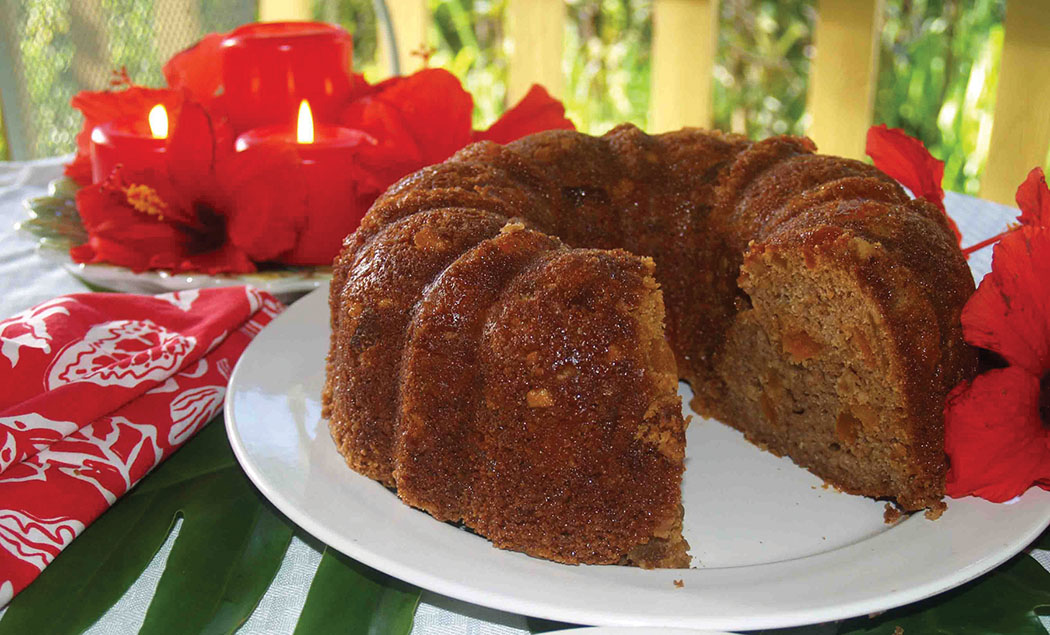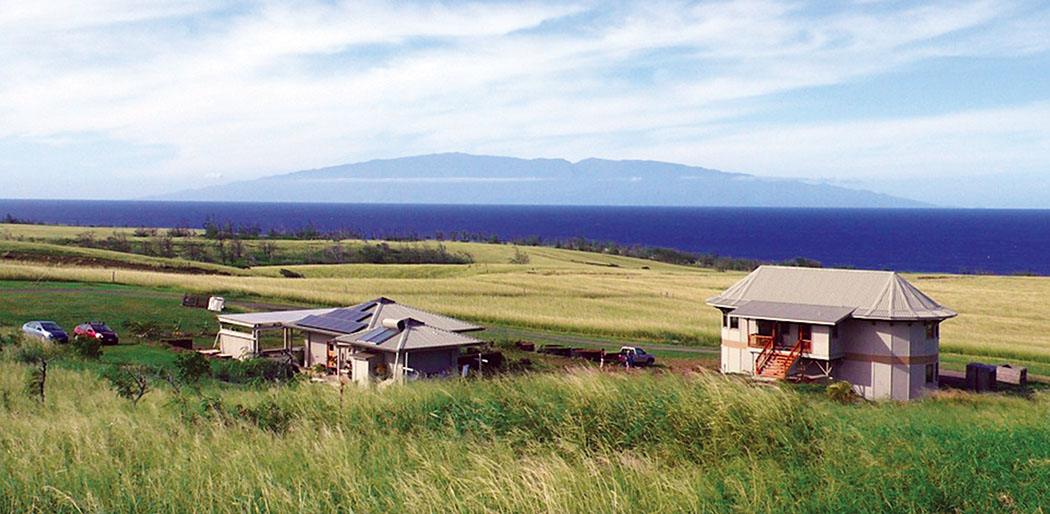
An Abundance of Energy: An Intentional Property in Harmony with Nature
 By Cynthia Sweeney
By Cynthia Sweeney
Once, people didn’t use such words as sustainable and organic because everything just was sustainable and organic. The earth provided, and people lived completely off the land. We can do that again today, only with state-of-the-art technology.
Standing on Holly and Eila Algood’s sustainable homestead in North Kohala is like taking a step both backwards and forwards in time.
The first thing I noticed, however, was that their wind turbine was barely moving.
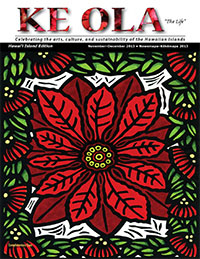
“Is it broken?” I asked.
They both grinned.
“We get that question a lot. We have such an abundance of energy right now it doesn’t need to work,” Eila explained.
An abundance of energy. There’s a phrase you don’t hear everyday.
Eila went on to explain that when you don’t have to rely on another entity or pay someone else for the energy you use, you look at energy use in a whole new way. And that is what Holly and Eila’s green journey is all about.
Holly and Eila bought their property in Hāwi in 2008 with the express purpose of building and living as green as possible. The result is a sanctuary that satisfies their own desire to live sustainably and contributes to the community, as well. On 34 acres at 200 feet elevation, the Algoods not only live off the grid—they excel at it.
“We’re about 85 percent self-sufficient,” Eila says.
Although I am intrigued that Holly’s office is an old, converted school bus permanently parked on the land, the centerpiece of the homestead is a large barn-like structure built out of bamboo, from floor-to-ceiling with double-wall construction and bamboo supports.
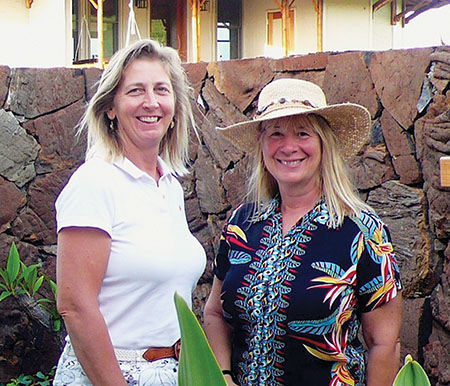
Wanting to experiment with this alternative building material, the Algoods’ research led them to a bamboo building company on Maui and a company in Viet Nam that constructed and shipped the barn to Hawai‘i Island in pieces, like a puzzle.
Building permits, which can be a lengthy process in Hawai‘i, were not a problem. The Viet Nam company’s product was certified and up to international building codes, and in Hawai‘i, green buildings are pushed through the permit process faster than those for conventional structures.
With community help, the basic framework of the barn went up in four days. A few months later, windows were installed.
Inside the barn is comfortably sheltered from the gusting wind and heat of the day outside. It is insulated with soy foam spray and blue jean scraps—actual, soft scraps of recycled blue jeans.
So why bother to insulate when we’re in Hawai‘i?
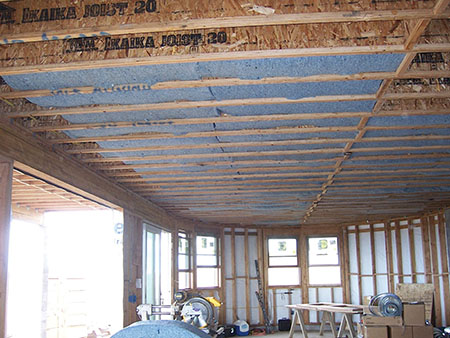
“Here, it’s used for sound insulation and it gives the building more strength. It’s also cooler during the day and warmer at night,” Eila explained.
On the walls, light earth tones emanate from the American Clay covering—a plaster-like product that emits negative ions, has resistance to mold, and simply looks good—giving off a warm sort of glow. The Algoods were so impressed with this product they are now a distributer of the clay.
The barn is also equipped with an energy efficient kitchen. The size, open space, and ambience of the barn provide an ideal venue for community events such as group meetings, African drum and dance classes, and ho‘oponopno mediation, of which Holly is a facilitator.
The other two buildings on the property—the Algoods living space and a vacation rental unit—were constructed with recycled foam and steel and spray concrete with the help of Tridipanel in Honolulu. Finding contractors and carpenters willing to work with these new materials was another matter.
“They were reluctant,” Eila said. “They struggled, so we did a lot of the work ourselves.”
The results were rewarding. The buildings stay cooler by day and warmer by night, are resistant to bugs, and last “forever.”
Holly and Eila used recycled materials wherever they could: used doors, used furniture, a reclaimed bathroom vanity.
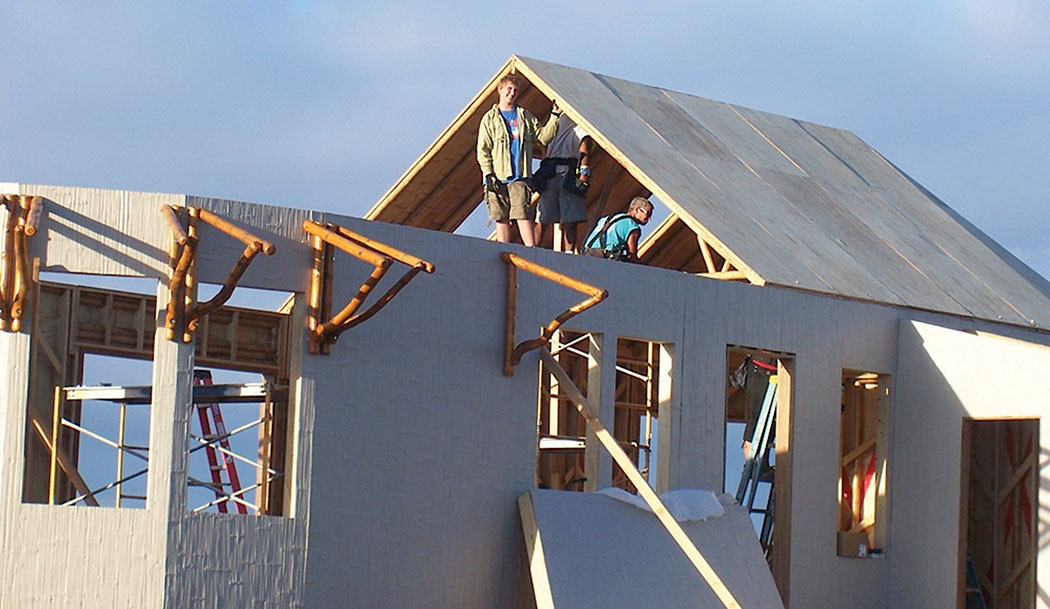
Appliances, as you might expect, were selected for their green qualities, including LED lights and an Energy Star refrigerator.
“We do not have a traditional kitchen,” Eila says. In lieu of a standard stovetop and oven, the Algoods selected a portable induction stovetop and a convection oven. “It suits me just fine. I’ve been using it for five years and there is much more flexibility.”
Though their living space is relatively small, the high ceilings, full-size bathroom, and floor-to-ceiling windows create an inviting space. As does the round “floating bed,” a platform with a round mattress suspended from the ceiling, far from the crawling reach of centipedes or scorpions.
Next door is the self-contained vacation rental cottage.
“People come from all over the world to learn how to live off the grid,” Eila notes, including, recently, a professor from the University of Hawai‘i.
“The first thing people can do is to be more conscious of the energy we use. We buy everything we can used—including clothes. It saves money and stuff doesn’t go into the landfill,” Eila said.
Another thing, “Turn off the power strip when you go to bed. We’re very conscious of where and when everything is hooked up.”
Initially, converting their solar and wind to energy that powers lights and appliances was a challenge. Eila, not to be daunted, taught herself the inverter system. Housed in a small outdoor closet, the system converts the wind and solar energy from AC to DC, into eight car-sized batteries that power the entire property. Maintenance to the system requires filling the batteries with water once a month and takes Eila about half an hour. There is also a back-up generator, just in case.
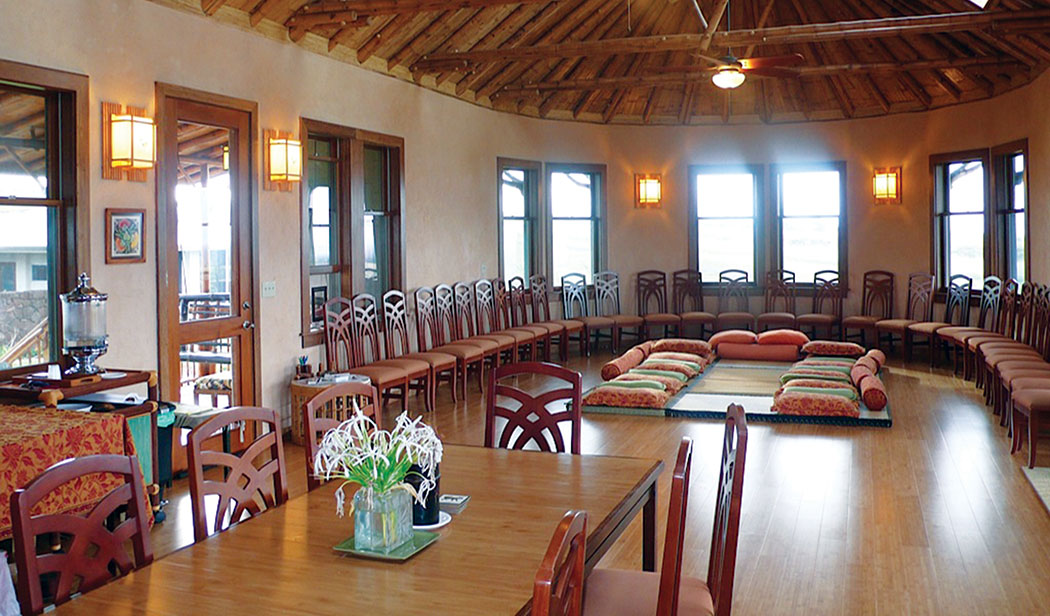
The Algood’s property has an expansive view of Maui, and the land in this part of the island is rugged. It has been 30 years since sugar cane was grown and harvested. The soil is unpredictable and the weather this year has been hot, windy, and dry. Planting something every day is a compulsion with Holly. They have planted 600 trees on the property so far, including 150 coconut trees. The goal is to plant 2,500 trees to bring back the land to a healthy state.
“The big thing we’re doing is in 30 years [we want] to have a food and hardwood forest. I try to plant something every day. That’s one of the things the land keeps telling me to do,” Holly explains.
Overflow from their catchment system is redirected by three pumps to water their trees and herb garden.
This manmade ecosystem is the tilapia tank. The fish provide food and their effluence is used to feed the plants.
On to the chickens—why shouldn’t they be just as comfortable? The chickens spend some of their time in mobile pens, which are rotated to where the grass is greener. The rest of their time is spent in a 24-square-foot, dome-like structure that is modeled after a Korean natural farming system. It’s built on layers of bio char and compost mixed with microorganisms, and the round shape disperses the wind. Eila remarks, “We have people ready to move in if the chickens ever move out.”
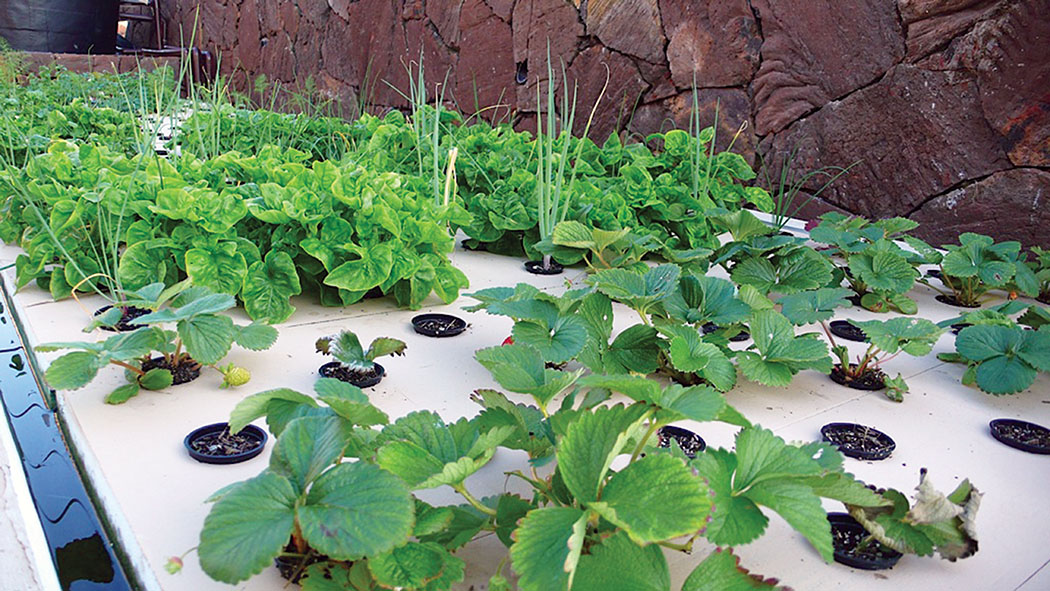
And the chickens seem happy and healthy, and don’t look like they are going anywhere soon.
Holly and Eila have created a domicile for themselves that is in sync with their philosophy. And the daily joy of living this way has motivated them to extend this lifestyle to the community. They live by example, and even though people may not have what it takes to live completely off the grid, Eila says there are steps that can be taken to live a little more sustainably and organic.
Eila’s top tips to shift towards a sustainable lifestyle:
- Appliances and lighting: Use a clothesline, LED lightbulbs.
- Treasures and trash: Shred waste paper and combine with food scraps to make great dirt and compost for your garden.
- Your landscape: Plant for shade, windbreaks, and food.
“We’re really committed to the community and feel it’s important to share [our experience],” Eila said. “It’s nice to share it with people if it gets them to think a little bit differently.” ❖
Contact Eila and Holly Algood: AlgoodLiving.com
Contact writer Cynthia Sweeney: sweeneywrites@yahoo.com
